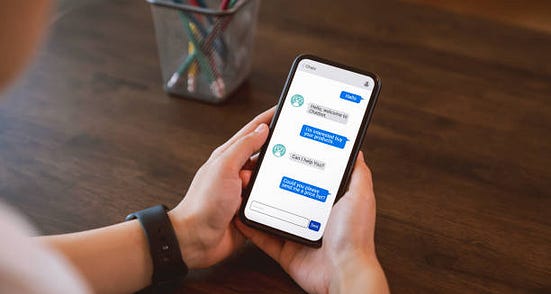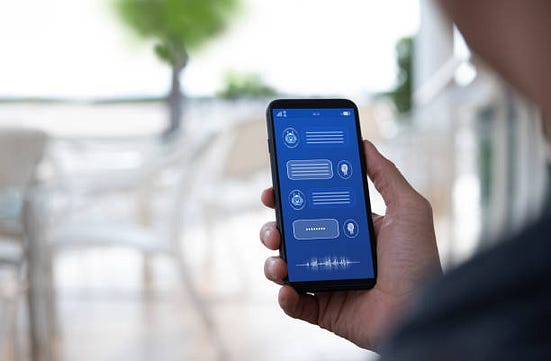The Ultimate Guide to Creating a Profitable Chatbot with ChatGPT
-
by anonymous
- 27

Chatbots are becoming increasingly popular in the business world, as they can be used to automate customer service, sales, and marketing tasks. ChatGPT is an AI-powered language model that can be used to create powerful chatbots that can engage with users in natural language, making them an ideal tool for businesses looking to improve their customer experience and increase revenue. In this guide, we will walk you through the process of creating a profitable chatbot with ChatGPT, from planning to deployment.
- Planning Your Chatbot
Before you start building your chatbot with ChatGPT, you need to have a clear understanding of what you want it to do. This involves identifying the tasks that the chatbot will perform, the audience it will target, and the goals you want to achieve.
Here are some questions to consider when planning your chatbot:
- What problem will your chatbot solve for your users?
- Who is your target audience?
- What goals do you want to achieve with your chatbot (e.g., increased sales, improved customer satisfaction, etc.)?
- What types of conversations will your chatbot have with users?
- How will you measure the success of your chatbot?
Once you have a clear understanding of what you want your chatbot to do, you can move on to the next step: designing the conversation flow.
- Designing the Conversation Flow
The conversation flow is the backbone of your chatbot, as it determines how your chatbot will interact with users. The conversation flow should be designed to be natural and intuitive, with the goal of providing a positive user experience.
Here are some tips for designing an effective conversation flow:
- Keep the conversation flow simple and straightforward. Avoid complex or convoluted conversations that may confuse users.
- Use natural language that is easy for users to understand.
- Use buttons, quick replies, and other interactive elements to guide users through the conversation.
- Provide clear and concise instructions to users.
- Use humor and personality to make your chatbot more engaging and memorable.
Once you have designed the conversation flow, you can move on to the next step: building the chatbot with ChatGPT.
- Building the Chatbot with ChatGPT

ChatGPT is a powerful language model that can be used to create sophisticated chatbots that can engage with users in natural language. Here’s how to build your chatbot with ChatGPT:
Step 1: Create an Account with OpenAI
To use ChatGPT, you need to create an account with OpenAI. Go to https://openai.com/signup/ and follow the instructions to create an account.
Step 2: Choose a Platform
There are many platforms that you can use to build and deploy your chatbot with ChatGPT. Some popular options include:
- Dialogflow
- Chatfuel
- Botpress
- Landbot
- Tars
Choose a platform that suits your needs and preferences.
Step 3: Connect ChatGPT to Your Platform
Once you have chosen a platform, you need to connect ChatGPT to your platform. This typically involves creating an API key and entering it into your platform’s settings.
Step 4: Build the Conversation Flow
Using your platform’s visual editor, build the conversation flow for your chatbot. Use natural language and interactive elements to guide users through the conversation.
Step 5: Train Your Chatbot with ChatGPT
Once you have built the conversation flow, you need to train your chatbot with ChatGPT. This involves providing ChatGPT with a dataset of text that your chatbot will use to generate responses.
Here are some tips for training your chatbot with ChatG
- Start with a small dataset of high-quality text. This could include customer support FAQs, product descriptions, or other relevant content.
- Use a diverse range of text to ensure that your chatbot can handle a variety of topics and questions.
- Continuously refine and update your dataset to improve the accuracy and relevance of your chatbot’s responses.
- Experiment with different parameters, such as the length of the generated response or the temperature (which controls the level of randomness in the response) to optimize the quality of your chatbot’s responses.
- Use a validation set to evaluate the performance of your chatbot and identify areas for improvement.
Once you have trained your chatbot with ChatGPT, you can move on to the next step: testing and refining your chatbot.
- Testing and Refining Your Chatbot
Testing and refining your chatbot is essential to ensure that it provides a positive user experience and achieves your business goals. Here are some tips for testing and refining your chatbot:
- Conduct user testing to gather feedback on your chatbot’s conversation flow, tone, and overall user experience.
- Use analytics to track key metrics, such as user engagement, conversion rates, and customer satisfaction.
- Continuously refine and optimize your chatbot based on user feedback and analytics data.
- Deploying Your Chatbot
Once you are satisfied with the performance of your chatbot, it’s time to deploy it. Here are some tips for deploying your chatbot:
- Choose a platform that supports your target channels (e.g., Facebook Messenger, WhatsApp, etc.).
- Test your chatbot on the chosen platform to ensure that it works as expected.
- Promote your chatbot through your website, social media channels, and other relevant channels.
- Monetizing Your Chatbot
Finally, let’s talk about how to monetize your chatbot. There are several ways to monetize your chatbot, including:
- Charging for access to premium features or content.
- Earning affiliate commissions by promoting relevant products or services.
- Generating leads or sales for your own products or services.
- Charging a subscription fee for ongoing access to your chatbot.
Choose a monetization strategy that aligns with your business goals and target audience.
In conclusion, ChatGPT is a powerful tool for creating profitable chatbots that can improve your customer experience and increase revenue. By following the steps outlined in this guide, you can build a successful chatbot that engages with users in natural language and delivers real value to your business.
chatbot Chatbots are becoming increasingly popular in the business world, as they can be used to automate customer service, sales, and marketing tasks. ChatGPT is an AI-powered language model that can be used to create powerful chatbots that can engage with users in natural language, making them an ideal tool for businesses looking to improve…
chatbot Chatbots are becoming increasingly popular in the business world, as they can be used to automate customer service, sales, and marketing tasks. ChatGPT is an AI-powered language model that can be used to create powerful chatbots that can engage with users in natural language, making them an ideal tool for businesses looking to improve…